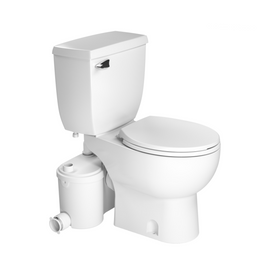
Small Livestock Options for Small Spaces
Last Updated: Feb 11, 2025In elementary schools around the country, images of farm animals are an integral part of educational tools. Children´s books and songs routinely use the imagery of the family cow, a barn filled with chickens and ducks, and sheep wandering through green pastures. However, most of these children, especially those in urban areas, have never seen, let alone interacted with, the farm animals that were part of our agricultural heritage. Today, most farm animals live in wretched conditions on factory farms. According to one estimate, “70.4 percent of cows, 98.3 percent of pigs, 99.8 percent of turkeys, 98.2 percent of chickens raised for eggs, and over 99.9 percent of chickens raised for meat are raised in factory farms.”
At the same time, seven out of every ten Americans state that they want better treatment for the farm animals that make up a significant part of our diet. Supporting local, organic farmers at farmer´s markets or participating in a community-supported agriculture (CSA) program is one way to find healthier, more local sources of ethically raised meat and dairy products. However, homeowners can also consider raising small poultry and livestock in their backyards as a pathway towards greater food autonomy.
Why Raise Farm Animals in a Backyard Setting?
In the 1970s, the United States Department of Agriculture encouraged farmers to “get big or get out.” This policy and mindset led to the decimation of small, family-sized farms and the corporatization of agriculture. Whereas small farmers of the past would raise a few heads of cattle, poultry, and livestock for their use and sale in local markets, today, animal farmers grow thousands of animals in confined lots and cages to maximize profitability.
This type of factory farming certainly raises concerns about animal welfare. Factory farms create artificial environments where disease and contamination are genuine concerns. The abundant use of antibiotics in these factories has led to the rise of antibiotic-resistant bacteria. It could lead to “super-germs” threatening public health. Whereas manure from animals on a diversified family farm can easily reincorporate into the soil as a safe source of fertility, the same cannot be said for factory farms. The sheer volume of animals leads to an accumulation of toxic waste that negatively affects air quality for residents who live near these operations. The runoff of this manure waste also contributes to the contamination of local waterways and the “dead zone” in the Gulf of Mexico.
Raising your animals for healthy, organic meat and dairy products can help you and your family avoid some of the authentic health and safety concerns associated with the factory farming of animals. Below, we offer simple ideas for raising chickens, rabbits, and sheep in small spaces.
Table of Contents
- Ideas for Raising Chickens
- Ideas for Raising Rabbits
- Ideas for Incorporating Sheep

Ideas for Raising Chickens
Chickens are Zindispensable farm animal. Not only do they provide eggs and meat, but they are also extremely independent and only require minimal inputs. To raise chickens in a backyard setting, you´ll need a small chicken coop (check out this Pinterest page for ideas) that includes a brooding area where you´ll keep your baby chickens warm, some nests where hens can lay eggs, and a caged-in sleeping area. During the daytime, you can let your chickens run free on the “range” of your yard. Chickens have a natural tendency to scratch, and they can function as a “natural pest control” as they search for and eat grubs and other lawn-damaging insects.
One of the main challenges with chickens is that they can be noisy, mainly if you include a rooster or to try and hatch your baby chickens. While many cities are updating their ordinances to allow for backyard chicken raising, there is no better way to anger your neighbors than a rooster that wakes them every morning at 4 AM. If you do want a rooster (and you´ll need one if you plan on harvesting fertile eggs that can hatch into new chicks), consider the Faverolles and Barred Rocks breeds. These breeds are relatively quiet, especially if you maintain a minimum ratio of 1 rooster to 6 hens.
During the winter, your chickens will only need a bit of supplemental feed and lots of fresh hay to put into their coop. The mixture of straw or hay and chicken poop can go into the compost bin for an extra dose of nitrogen that your plants will love in the springtime. Chickens love eating through your kitchen scraps. They are a simple way to get rid of your food waste, which is a surprisingly significant contributor to household greenhouse gas emissions.
Ideas for Raising Rabbits
Rabbits are adorable. They are also one of the most relaxed backyard animals to raise in small settings. Raised cages placed over a bin filled with sawdust, straw, or other “dry” material make it easy to avoid the sometimes unpleasant smell of rabbit urine. You can keep your rabbits in a raised cage made from a heavy-duty chicken wire during the night and then “pasture” them on your lawn during the day by placing them in a movable “rabbit tractor.” Moving rabbits into your garden after harvest is a quick way to get rid of unwanted vegetation and prepare the soil for the next planting.
Supplemental rabbit feed is relatively inexpensive, and establishing a morning routine of cutting weeds for your rabbits to munch on is a great way to start a day. It is essential to understand, however, that rabbits reproduce exceptionally quickly, meaning you will either have a steady supply of high-protein, healthy meat or need to find a home for your quickly increasing colony of rabbits.
Shop All Special Offers
Shop Special Offers on vetted Home Improvement products at low prices while supplies last.

Stiebel Eltron Accelera 300 E Heat Pump Water Heater
Stiebel Eltron
In Stock

Victory Range Hoods Sunset 600 CFM White Flush Ceiling Mount Dimmable LED Range Hood
Victory Range Hoods
Out of Stock

Victory Range Hoods Sunset 600 CFM Flush Ceiling Mount Dimmable LED Range Hood
Victory Range Hoods
Out of Stock

Stiebel Eltron Accelera 220 E Heat Pump Water Heater
Stiebel Eltron
In Stock

Quickscrews Cabinet Install Screws
Quickscrews
In Stock

Victory Range Hoods Horizon Matte White Flush Ceiling Mount Range Hood with Dimmable LED Lights
Victory Range Hoods
Out of Stock

Saniflo Sanibest Pro Combo Macerator System
Saniflo
In Stock

Blanco PRECIS Super Single Undermount SILGRANIT Kitchen Sink
Blanco
In Stock
9 Colors

Blanco PRECIS 30 Undermount Single Bowl SILGRANIT Kitchen Sink
Blanco
In Stock
9 Colors

Hauslane Chef 36" UC-PS18 860 CFM Ducted Undercabinet Range Hood
Hauslane
In Stock
2 Colors

Ideas for Incorporating Sheep
Americans use an estimated 600 million gallons of gasoline each year for mowing their lawns. The emissions from running lawnmowers contribute to climate change, and they could be entirely avoided by switching to a “biological form” of lawn management. Imagine a machine that can harvest plant and grass growth, mix it in a fermentation chamber, and deposit it back on the yard in a form that increases the fertility and organic carbon content of the soil. This machine would be completely “solar-powered” and could reproduce itself without any external inputs.
Instead of ending up in a landfill, at the end of its useful life, it could be turned into clothing and edible products, or sold for a profit. Is such a machine too good to be true?
In case you haven’t caught the sarcasm, sheep and other ruminants are the “machines” described above. Ruminants are mammals that can gather their nutrients from plant-based foods (mostly grasses). They have specialized stomachs that allow for fermentation to occur before digestion, thus allowing them to survive on plants that humans cannot use. While cows might be too large for homeowners with limited acreage to maintain, sheep are an excellent option for small-scale homesteads.
A small investment in sheep-proof fencing around your yard and a small shelter is all that is needed to raise sheep in a suburban setting. The savings from having to mow your lawn (especially if you contract this service) would quickly pay back the initial investment. Rotational grazing methods can allow you to turn your yard from an agrochemical-dependent, carbon-emitting monoculture into a thriving grassland that captures carbon creates pollinator habitat, and offers you a grilled rack of lamb a couple of times a year.
Purchasing a couple of bales of hay from a local farmer and some supplemental feed is all you need to “overwinter” a couple of sheep when snow is covering your lawn. Sheep are relatively quiet animals that will not bother your neighbors.
Raising the farm animals that we sang about during our childhood education is a fun and practical way to care for our soils while sustainably increasing our food autonomy.
Tobias Roberts
Tobias runs an agroecology farm and a natural building collective in the mountains of El Salvador. He specializes in earthen construction methods and uses permaculture design methods to integrate structures into the sustainability of the landscape.
